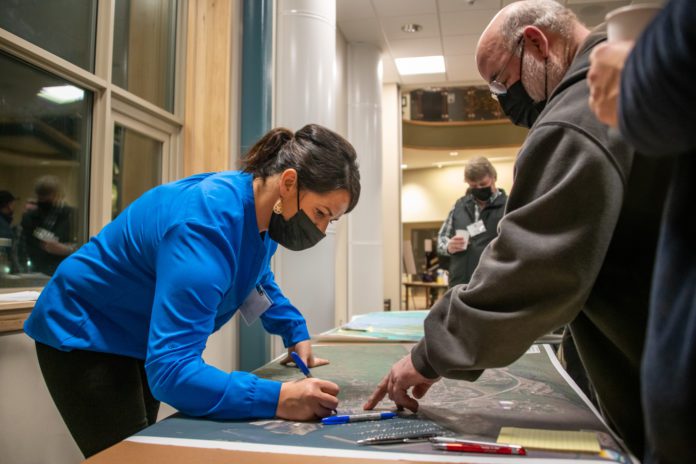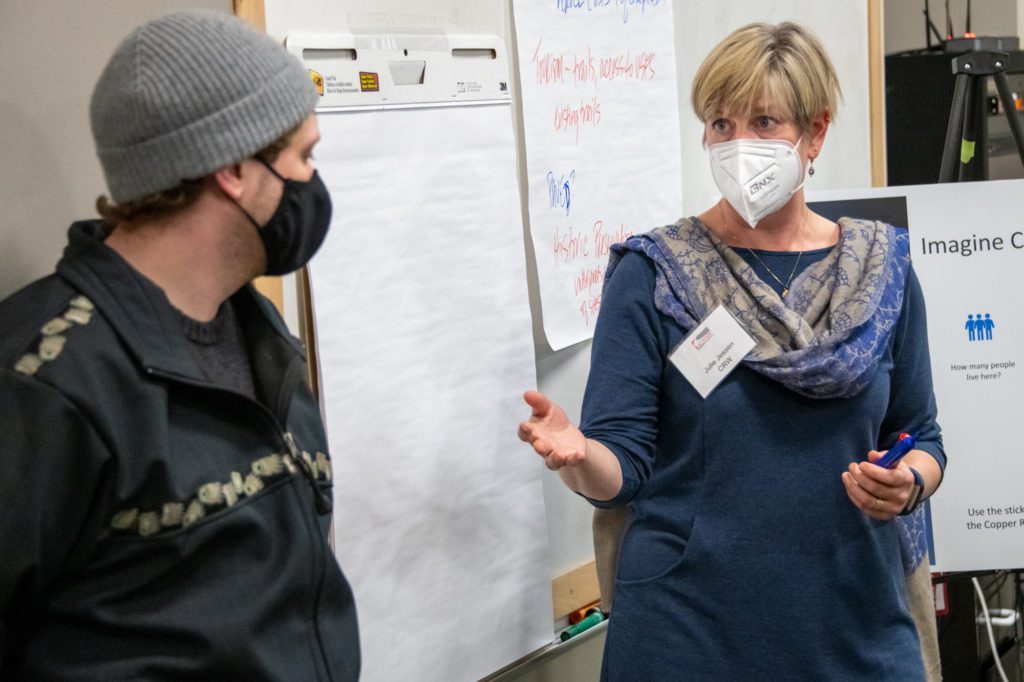
At a January 26 meeting at the Cordova Center, residents offered input on the Alaska Department of Transportation and Public Facilities’ 25-year Transportation Master Plan for the Copper River Highway.
Common suggestions raised at the meeting included providing a bike path from Cordova to Merle K. “Mudhole” Smith Airport and fixing Copper River Delta Bridge No. 339, said DOT regional planner April Woolery. Bridge 339 is a 401-foot concrete-decked structure meant to connect two banks of the Copper River. However, the bridge was rendered useless by erosion that undermined its support piers and swept away part of the connecting road. A 2019 draft Planning and Environmental Linkage, or PEL, study suggested possible fixes like building an entirely new bridge, extending the existing bridge or erecting a cable-car line. Woolery said officials also heard concerns about economic development, about access to outdoor recreation and about subsistence activities. However, the department is still compiling and documenting suggestions and comments, she said.

Project organizers said they were very pleased with the enthusiastic public participation at the meeting.
Public input will assist engineers and scientists in shaping the Transportation Master Plan and the PEL study. While the master plan will help the department map out longer-term plans for the area around the Copper River Highway stretching from mile 0 to mile 51, the PEL study will focus more on immediate and specific issues between mile 27 and mile 51, said DOT regional hydraulics engineer Jeff Stutzke. This information will help the department prioritize projects and identify potential funding partnerships, he said.
The department also plans to reach out to community stakeholders at another community meeting in June, Stutzke said. A draft report on the Transportation Master Plan will be published during the fall, followed by a final draft in November and a project completion date set for December. The PEL study will follow a similar schedule, Stutzke said.
“The open house was definitely not the ‘one and done’ window to voice opinions and submit comments,” Stutzke wrote in an email.
Questions or comments on the Copper River Highway Transportation Master Plan can be directed to Copper River Watershed Engineering Group public involvement specialist jjessen@crweng.com or to Woolery at april.woolery@alaska.gov. Questions or comments on the PEL study can be directed to Stutzke at jeff.stutzke@alaska.gov.














